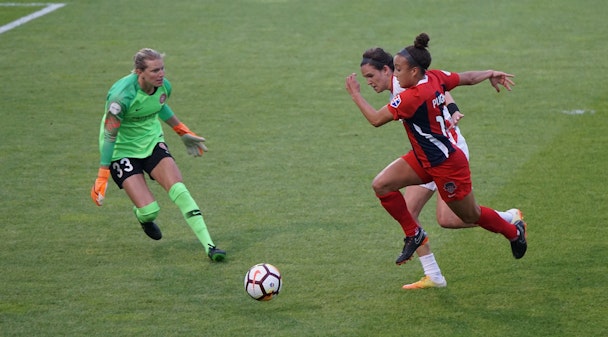How can marketers do a better job of reaching female fans?
Women’s sport is growing rapidly, but sports organizations still struggle to connect with female fans. Lee Gibbons, managing director of Sport Unlimited, tells us that one-size-fits-all approaches won’t cut it. For The Drum’s Deep Dive into sports marketing, Gibbons tells us that successfully reaching more female fans starts with understanding what they really want.

Off-pitch competition for female fans is increasing / Jeffrey F Lin via Unsplash
In today’s complex and fragmented landscape, brands knowing their audience – what motivates them or what holds them back, and then providing insightful messages and solutions – is invaluable. Just look at Bumble’s strategy, or how Adidas’s recent #SupportisEverything campaign speaks to its female consumers.
Strategies to fuel the exponential growth in women’s sport have almost solely been around driving visibility. Men’s and women’s sport, therefore, are often communicated and marketed similarly.
Does that mean that nuances between how male and female fans are motivated are being missed? Is the female sports audience different from female sports as a product, meaning that value (particularly with female fans) is being left on the table?
Female sponsorship is a winner’s game
Research from our Human Understanding Lab asked UK sports fans if more women’s sports coverage would lead them to watch more. 20% agreed, compared to the global average of 41%. The UK was second from the bottom.
46% of UK females consider themselves sports fans, yet 66% of those don’t currently follow a women’s team, league or tournament – and 30% don’t currently follow any football, cricket or rugby teams, league or tournament, men or women’s.
When asked why they didn’t follow a women’s team sport, 20% said it didn’t connect with them emotionally. 15% said women’s sports teams and tournaments didn’t engage them as they liked.
There’s an opportunity here, and visibility alone isn’t the answer to capitalizing on the explosion in women’s sport we’re currently seeing.
In addition to landmark broadcast deals, and international football and rugby tournaments in 2022, women’s sports is helping some established team sport rights holders in the UK to strive for new, more diverse, younger and family-friendly audiences.
At the same time, women’s sport offers sponsor brands a new point of difference, a space with less clutter and a proposition better suited to landing a purpose-led message. Purpose is a territory that 65% of UK sports fans say they want to see more of post-Covid; women’s sport has come out of Covid stronger than it went in.
Even before looking at fans, any rights-holder or sponsoring brand not considering the sheer spending power of the female consumer does so at their peril. The sheer value of female fandom pays off in spades.
Emotion is the key to sponsorship ROI
Visibility was of course a factor, but when we asked female fans not currently following a women’s team, league or tournament why, three out of the top five responses were linked to a lack of emotional connection or engagement. The way that sports, broadcasters and sponsors are talking to female fans is missing emotional appeal.
Belonging is our most effective tool
When we compare these female drivers with male fans, we start to see clear differences in what was driving their fandom.
For female fans, family is key. They were statistically more likely to be influenced by a family connection than male fans. This covers both ends of the spectrum: ‘my family have always supported them’ and ‘it’s something to do with my family’ were the two highest-scoring reasons for fandom among female fans.
For male fans, the highest-scoring reason for supporting their preferred rights holders was something more intrinsic; ‘it’s part of my identity.’ This scored twice as high as the importance of their team winning. This is where campaigns focusing on the rituals, banter and ingrained allegiances do well.
We know ‘belonging’ is a basic human need, like food, water and shelter. Our neuroscientists tell us that it’s also one of the strongest emotional drivers of fandom; a sense of brother- or sisterhood among fellow supporters. Both male and female fans associated heavily with the drivers of fandom linked to belonging; the top emotional driver was a ‘shared experience.’ For men, this is closely related to ‘winning and losing together’ – the result on the field of play was crucial. However, for female fans significantly more important was ‘a sense of community among supporters.’
So, how do we engage female fans?
There will be nuances depending on the sport being activated or the category in which the sponsor sits. But, generally, ‘community’ and ‘belonging,’ ideally portrayed by the fans themselves, should be the central themes to all messaging and imagery. This will reinvigorate the passion of existing fans, and serve to ignite passion in potential fans.
Check out The Drum’s latest Deep Dive, The New Sports Marketing Playbook, and learn the tactics employed by the world’s biggest sports organizations and their star athletes to stay at the top of their game.
Content by The Drum Network member:

UNLIMITED
UNLIMITED is the UK’s leading conversion agency. Our mission is to create genuine business advantage for clients, and we do this by uncovering behaviour-led insights...
Find out more
